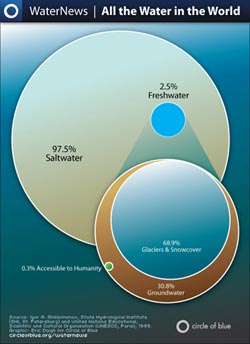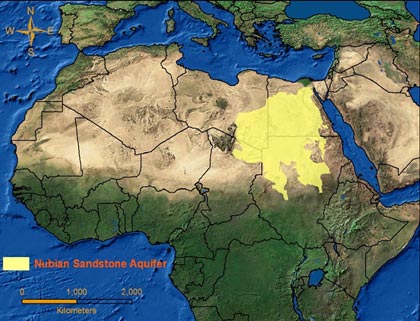Showering in fossilised water… how cool does that sound? Transported back in time to when dinosaurs roamed the earth for a quick shower under a waterfall for the purposes of this blog… But, I hear some of you ask, haven’t you already done that Cath, back when you were showering with the Neanderthals? Ha ha, only kidding. I know that all the readers of this blog are acutely aware that humans (even proto humans) were not around in the time of the dinosaurs!
So when I say ‘showering in fossilised water’ I am talking about showering today but in water that is thousands of years old. In some ways we could argue that’s every shower we all take. After all, there has been water on earth for 4.5 billion years, circulating continuously in the natural water cycle. And, as water molecules are extremely resilient, it’s more than likely that the water molecules we are showering in now are the same ones that were around in the rivers and lakes during the 186 million years that dinosaurs ruled this planet. In fact, you could take this analogy one step further (as this quite cool video has done) and argue that dinosaurs probably drank all the available water at some point during the Mesozoic Era, and all the water available now is simply water that has passed through a dinosaur’s kidneys as it makes its way through the never-ending water cycle. Ergo… we are showering in dinosaur wee! If that’s the case then I hope I have been showering in wee from a Diplodocus rather than a Velociraptor – just a personal choice you understand…
 Anyway where was I? Ah yes. Showering in fossilised water…
Anyway where was I? Ah yes. Showering in fossilised water…
The water that is available to us to shower in is the less than 1% of the earth’s water that is not sea water or locked up in the polar icecaps. And most of that available water (over 90% of it) is groundwater – the water that fills cracks and other openings in beds of rocks and sand, (aquifers) and is formed/replenished by rainfall. Fossil water” (or paleowater) is the term used to describe water that infiltrated millennia ago, often under climatic conditions different from the present, and that has been stored underground since that time. Some fossil water is water sealed in subglacial lakes such as Antarctica’s Lake Vostok but most is groundwater.
In arid regions, some aquifers containing available and usable water receive little to no significant recharge, effectively making groundwater in those aquifers a non-renewable resource. Extraction rates greater than recharge rates result in groundwater depletion. Often referred to as groundwater “mining”, it is a procedure that is not sustainable meaning that other solutions need to be found.
So where would I need to go to sample fossilised groundwater? Scientists estimate that Africa’s groundwater totals about 0.66 million cubic kilometres, which means the continent has over 100 times more water underground than on the surface. And huge amounts of that is fossil water (estimated to be as much as a million years old in places) and is underneath the Sahara.
The Nubian Sandstone Aquifer System is a large prolific aquifer covering about 2,000,000 km2 located under Sudan, Libya, Egypt, and Chad. It is largely composed of many hydraulically interconnected sandstone aquifers. The water was deposited between 4,000 and 20,000 years ago, depending on locality. Groundwater type varies from fresh to slightly brackish (salinity ranges from 240-1300 ppm), and is of significant socio-economic value to the region.

Libya mines large amounts of the aquifer in a vast engineering project known as the Great Man-made River Project (GMMR) which, before the uprising, was supplying 6,500,000 m3 of fresh water per day to its major cities such as Tripoli, Benghazi and Sirte.
I haven’t visited Libya, but I have visited Egypt several times. Although that country gets most of its water supplies from the Nile, it does also extract water from the aquifer. So it looks as though I have probably showered in fossilised water in both senses of the term. Bish, bosh sorted as we say in the ech2o office…
